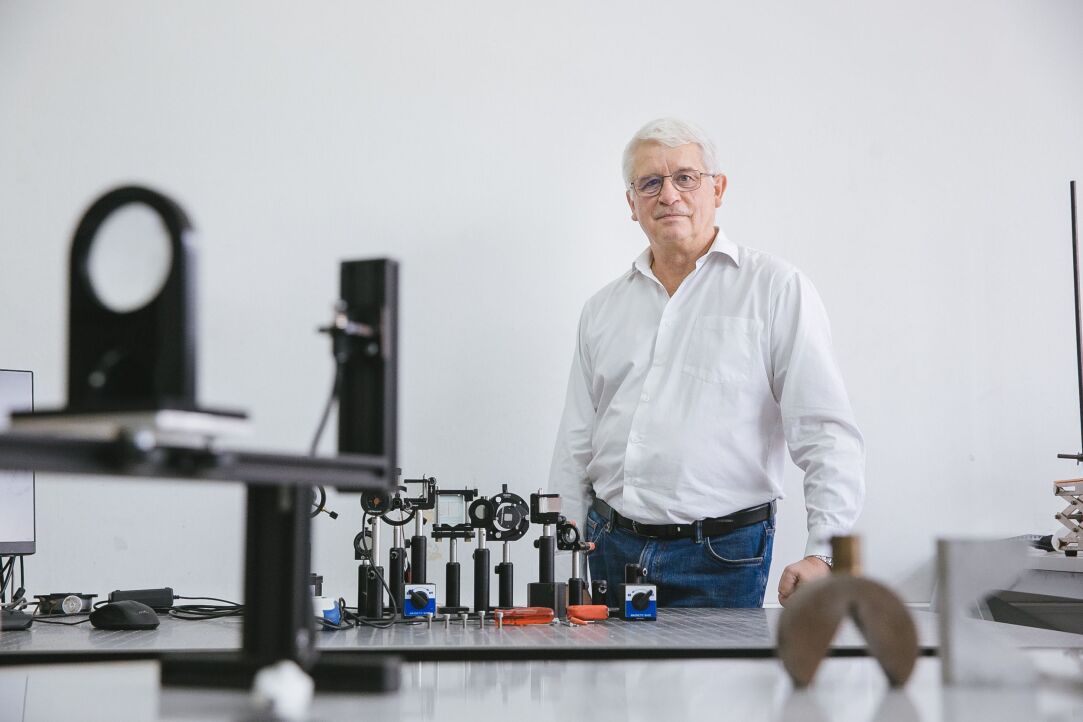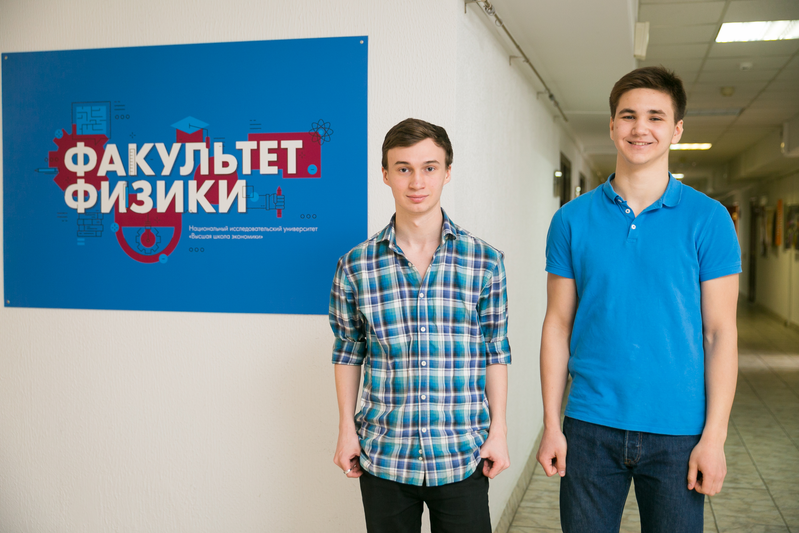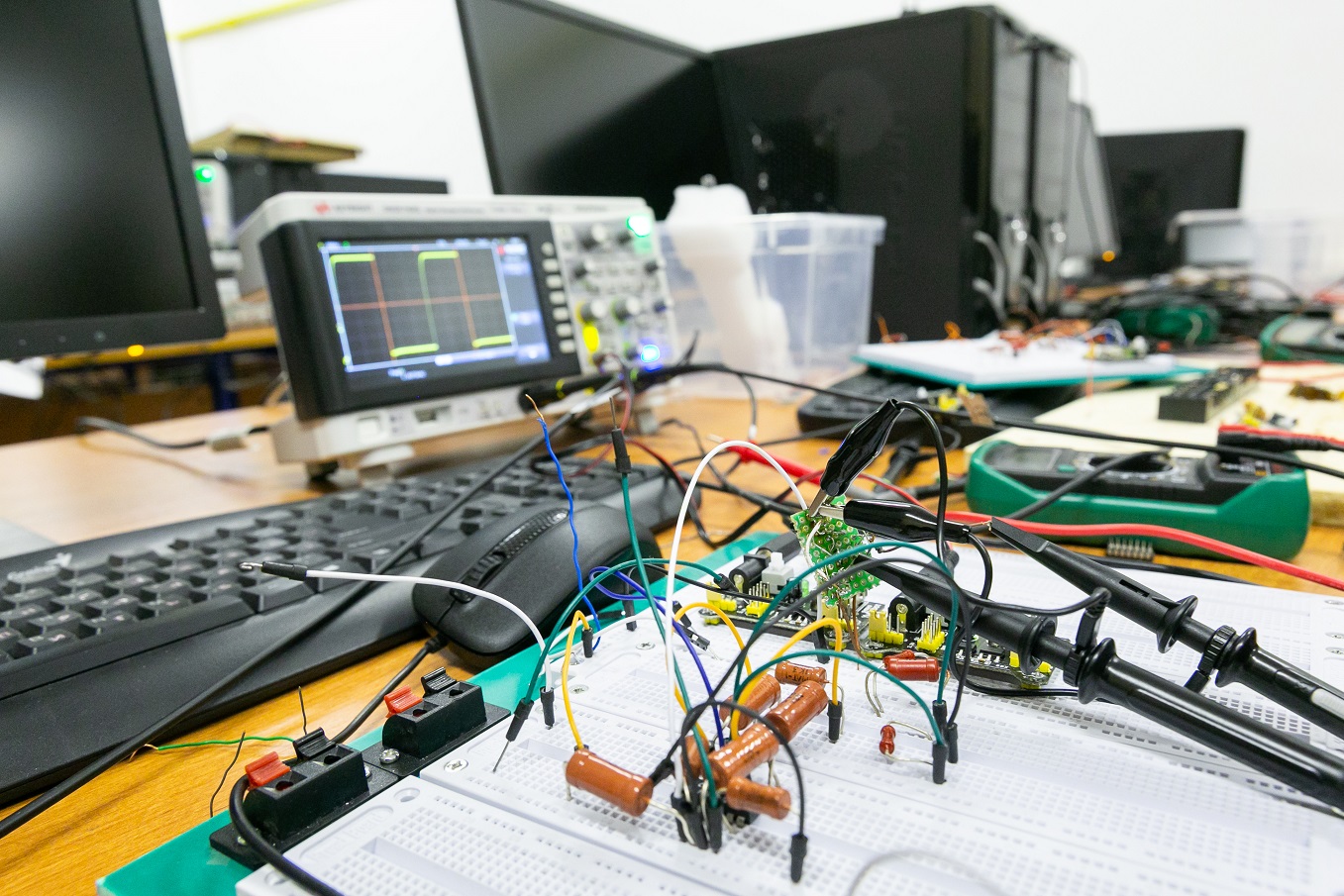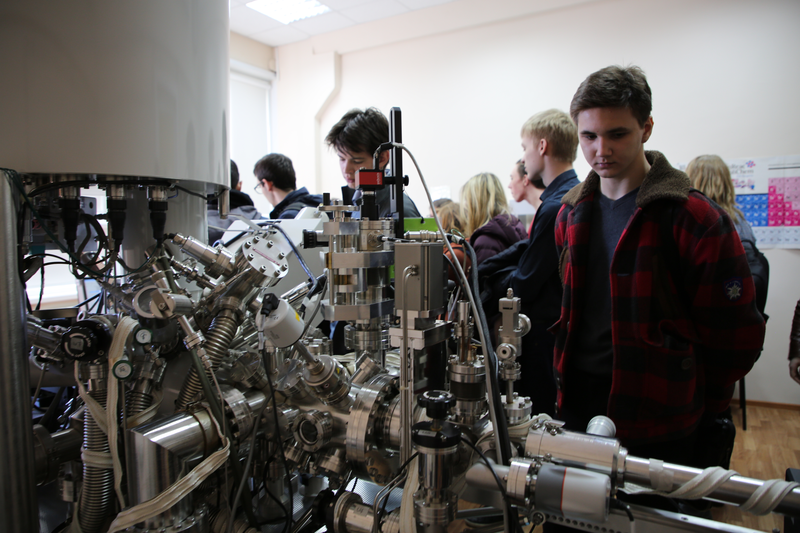‘Students at HSE University’s Faculty of Physics Receive a World-Class Education’

On October 10, 2016, the Faculty of Physics was created at HSE University. It was the university’s first natural science faculty. Its first master’s students graduated in 2019, its first bachelor’s students completed their studies in 2021, and the first doctoral students will do the same in 2023 after beginning their bachelor’s studies in 2017. In his interview, Mikhail Trunin, Dean of HSE University’s Faculty of Physics, talks about the Kapitsa educational system implemented at the faculty, the results that have been achieved in seven years of work, and what is still missing.
— How did physics come to HSE University?
— By the mid-2010s, it became clear that HSE University should be a classic university of international standing. And any prestigious global university has a powerful natural science block, the core of which is the physics department.
Apparently, HSE University’s management was considering the idea of such a department; there were different candidates for its creation, but in the end, Rector Yaroslav Kuzminov opted for our team. We came from the Faculty of General and Applied Physics at Moscow Institute of Physics and Technology (MIPT), where I worked as dean for almost eight years, until 2016.
The HSE University rector tasked us with creating the best physics department in the country. The first enrolment took place in 2017—about twenty people were admitted to the bachelor’s programme and the same number to the master’s programme.
— What were the founding principles of the faculty?
— There are two such principles, and they are tightly connected: training students according to the system of Pyotr Kapitsa and developing physics research in modern experimental laboratories.
The educational system proposed by Kapitsa during the creation of MIPT ensured great success for that university, and in the last century, it spread to a number of universities specialising in physics and technology. But today, in my opinion, it has only been fully implemented at HSE University. The Kapitsa system is based on three pillars.
Firstly, future scientists must be taught by scientists. From the first year of our bachelor’s programme, almost all courses are taught by practicing scientists—specialists in the area of physics or mathematics to which their course is devoted. They make up about 90% of the total number of faculty teachers, and it is not easy to recruit them; not every scientist is capable of teaching.

Secondly, students need to be involved in real scientific research as early as possible. After they have studied the main areas of physics and mathematics in the first two years, we send them to joint departments in seven leading institutes of the Physical Sciences Division at the Russian Academy of Sciences. There, they not only listen to lectures on the areas of science relevant to a particular institute, but also conduct research under the guidance of researchers from these institutes.
Thirdly, an individual approach is required. We have 160 external part-time teachers, about 250 students are being taught in all undergraduate and graduate courses, and according to the faculty rules, a teacher can supervise one student per course.
As for the development of physical science in experimental laboratories with the participation of students, we are fully utilising the potential of the research laboratories at our base institutes.
— How do students and graduates benefit from the Kapitsa system?
— By learning from leading scientists and being at the forefront of modern science, students of HSE University’s Faculty of Physics receive a world-class education.

Our graduates have no problem finding employment because from the very beginning of their studies, they have access to employers—the institutes within the Russian Academy of Sciences. Starting from the first graduating class of 2019, approximately half of our master’s graduates go on to doctoral school and continue their academic careers at institutes, while the rest go into IT, R&D, and some go abroad.
— Is it the case that physics students at HSE University only study theory, and practice is the prerogative of joint departments outside the university?
— No. Of course, at our faculty we have a training laboratory practicum, which we tried to fit with modern equipment so that students can become familiar with it at the training stage.
Laboratory classes are held at any university where physicists are trained, but, as a rule, these classes are quite formalised. Students work according to a strict procedure outlined in the guidelines.

But no matter how good our educational workshop is, its capabilities are not enough to conduct serious scientific research. Students carry out the real scientific work at joint departments of the institutes within the Russian Academy of Sciences, which have specialised expensive equipment and qualified research staff.
— What results of the faculty’s work can you talk about? What are you proud of?
—The fact that our small and intimate faculty, which arose from nothing, is gaining popularity every year and successfully competing with leading engineering and physics universities with a long history. We enrol intelligent and diligent applicants who are truly interested in physics and know how to study.

Our teachers are world-class scientists. Across the entire faculty, 80% of teachers have an academic degree. Most of them are young scientists, including doctors of science, who teach online classes on the faculty’s campus.
Over seven years, faculty members have published about 900 articles on physics with an affiliation to HSE University. More than 60% of these have been in A-list journals, and about 100 articles have been co-authored with our students and doctoral students. Students also actively participate in conferences; since the faculty opened, they have made 700–800 scientific reports.
— What does your faculty lack? What do you see as the top priority of its future development?
— We lack real research laboratories on the faculty campus. Yes, they are available at the base institutes within the Russian Academy of Sciences, and students work there, but there should also be modern experimental laboratories at the faculty. Then we would have staff members working full time at HSE University and publishing articles affiliated only with our university.
By creating modern physics laboratories at HSE University, we would be able to earn money and strengthen the position of our faculty in the world, strengthening its international status. This is the main path for the development of HSE University’s Faculty of Physics. We need the results of current research, which is carried out not only in the joint facilities, but also within the walls of the university.
See also:
Physicists Propose New Mechanism to Enhance Superconductivity with 'Quantum Glue'
A team of researchers, including scientists from HSE MIEM, has demonstrated that defects in a material can enhance, rather than hinder, superconductivity. This occurs through interaction between defective and cleaner regions, which creates a 'quantum glue'—a uniform component that binds distinct superconducting regions into a single network. Calculations confirm that this mechanism could aid in developing superconductors that operate at higher temperatures. The study has been published in Communications Physics.
'Even among Geniuses, Luck Plays a Role in Winning a Nobel Prize'
Denis Bodrov studies particle physics and works at one of the four electron–positron colliders in the world. In this interview with the HSE Young Scientists project, he talks about his efforts to go beyond the Standard Model, discusses tau leptons, and shares his affection for Moscow.
Physicists at HSE University Reveal How Vortices Behave in Two-Dimensional Turbulence
Researchers from the Landau Institute for Theoretical Physics of the Russian Academy of Sciences and the HSE University's Faculty of Physics have discovered how external forces affect the behaviour of turbulent flows. The scientists showed that even a small external torque can stabilise the system and extend the lifetime of large vortices. These findings may improve the accuracy of models of atmospheric and oceanic circulation. The paper has been published in Physics of Fluids.
New Method for Describing Graphene Simplifies Analysis of Nanomaterials
An international team, including scientists from HSE University, has proposed a new mathematical method to analyse the structure of graphene. The scientists demonstrated that the characteristics of a graphene lattice can be represented using a three-step random walk model of a particle. This approach allows the lattice to be described more quickly and without cumbersome calculations. The study has been published in Journal of Physics A: Mathematical and Theoretical.
‘It Was Interesting to See How Our Chinese Colleagues Work’: HSE Researchers Take Part in Hefei Summer School
This summer, Diana Sukhoverkhova, Daria Mazur, and David Kagramanyan, research assistants at the MIEM HSE Laboratory for Computational Physics, spent five weeks in China. At the Future Scientist Exchange Program (FuSEP) summer school in Hefei, they worked in new fields of science together with their Chinese colleagues. HSE's promising scientists spoke to the HSE News Service about their intense and productive time in China.
‘The Fundamental Principle of Scientific Knowledge Is Honesty’
Daria Mazur has wanted to pursue science since she was 13 years old—ever since she discovered in the seventh grade that she was good at physics. In an interview for the HSE Young Scientists project, she spoke about her theoretical research on the electric double layer, speed reading, and the MGMT song ‘Little Dark Age.’
Russian Scientists Reconstruct Dynamics of Brain Neuron Model Using Neural Network
Researchers from HSE University in Nizhny Novgorod have shown that a neural network can reconstruct the dynamics of a brain neuron model using just a single set of measurements, such as recordings of its electrical activity. The developed neural network was trained to reconstruct the system's full dynamics and predict its behaviour under changing conditions. This method enables the investigation of complex biological processes, even when not all necessary measurements are available. The study has been published in Chaos, Solitons & Fractals.
Russian Physicists Discover Method to Increase Number of Atoms in Quantum Sensors
Physicists from the Institute of Spectroscopy of the Russian Academy of Sciences and HSE University have successfully trapped rubidium-87 atoms for over four seconds. Their method can help improve the accuracy of quantum sensors, where both the number of trapped atoms and the trapping time are crucial. Such quantum systems are used to study dark matter, refine navigation systems, and aid in mineral exploration. The study findings have been published in the Journal of Experimental and Theoretical Physics Letters.
Russian Scientists Demonstrate How Disorder Contributes to Emergence of Unusual Superconductivity
Researchers at HSE University and MIPT have investigated how the composition of electrons in a superconductor influences the emergence of intertype superconductivity—a unique state in which superconductors display unusual properties. It was previously believed that intertype superconductivity occurs only in materials with minimal impurities. However, the scientists discovered that the region of intertype superconductivity not only persists but can also expand in materials with a high concentration of impurities and defects. In the future, these superconductors could contribute to the development of highly sensitive sensors and detectors. The study has been published in Frontiers of Physics.
Scientists at HSE University Devise More Accurate Method for Predicting the Electrical Conductivity of Electrolyte Solutions
Researchers at HSE MIEM have developed a model for calculating the electrical conductivity of aqueous electrolyte solutions; for the first time, it considers the spatial distribution of ion charges instead of assuming their localisation at a single point. The model remains effective even at high electrolyte concentrations and across a wide temperature range. This breakthrough will contribute to the development of more efficient batteries and enable the calculation of electrical conductivity without the need for experimental testing. The study has been published in the Journal of Chemical Physics.


